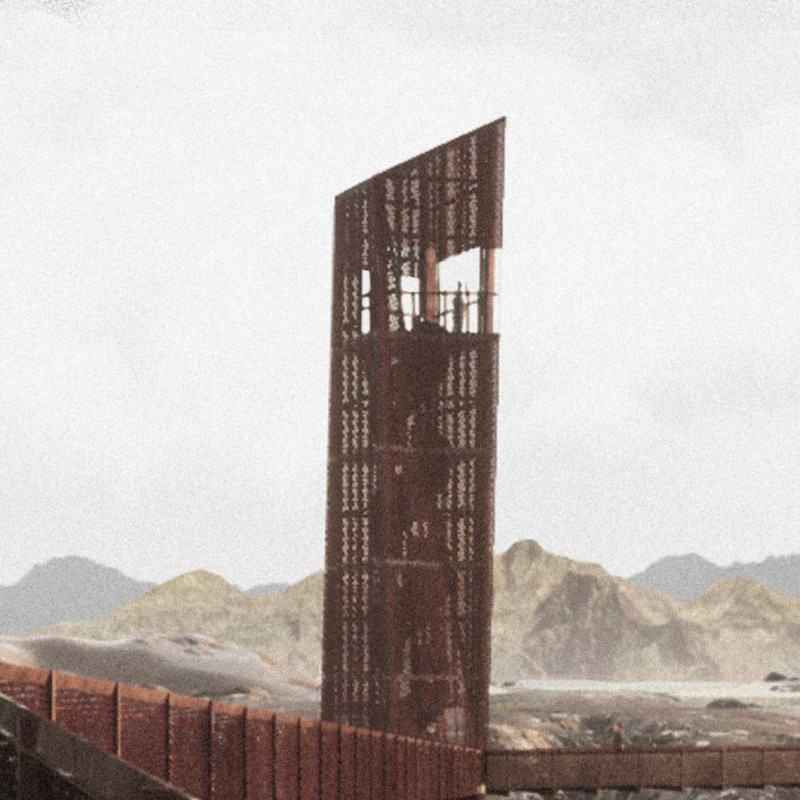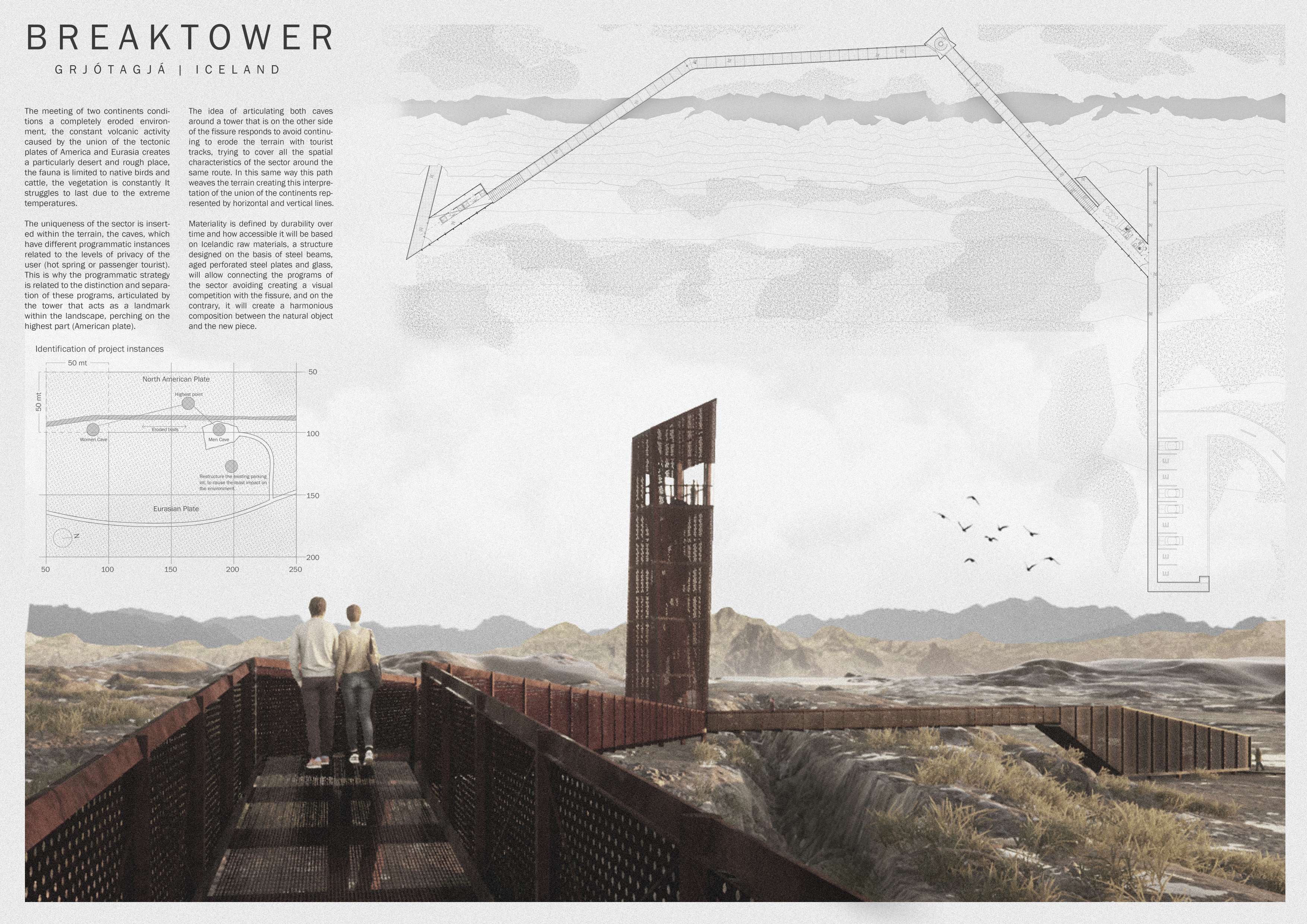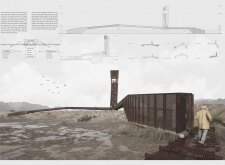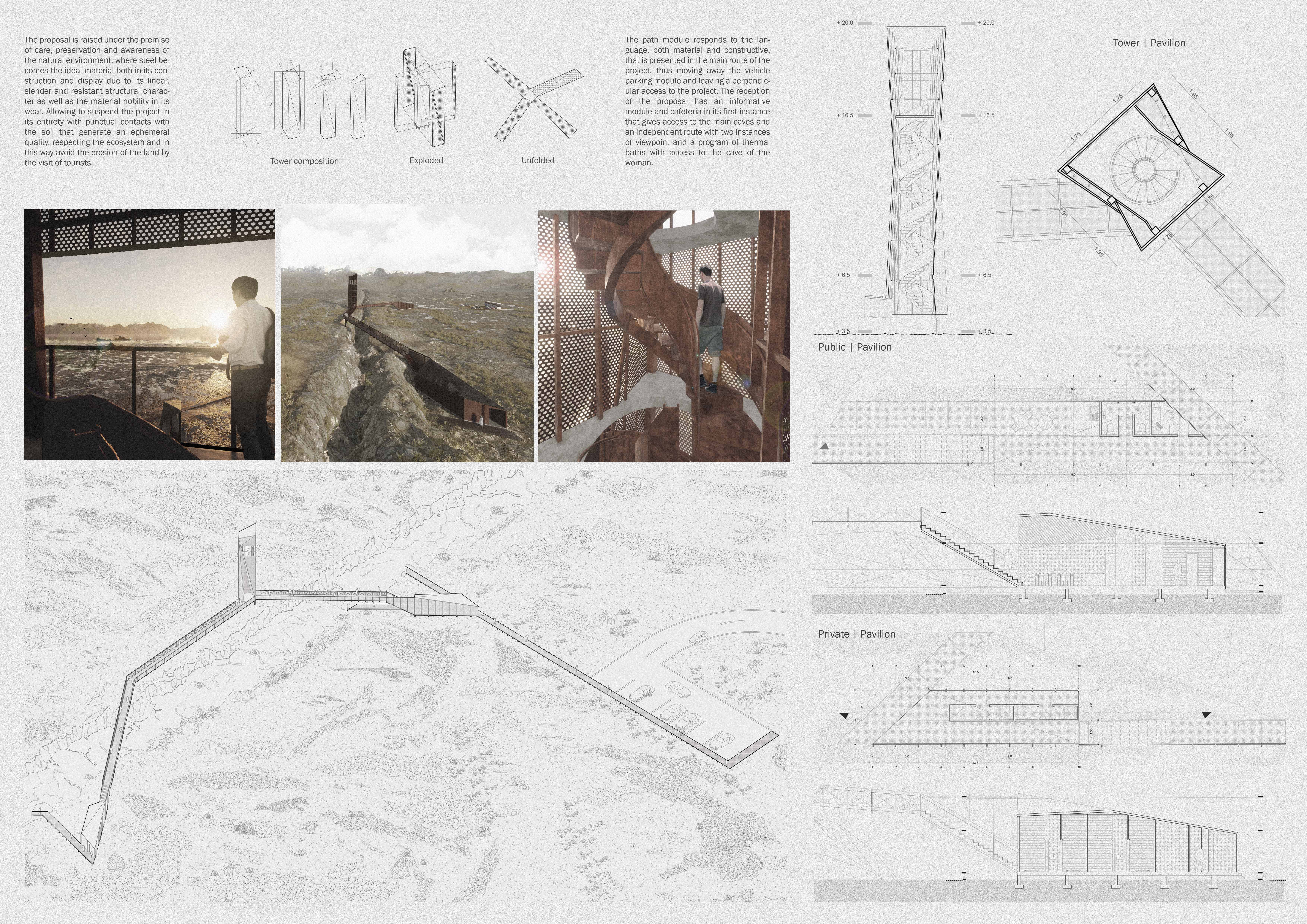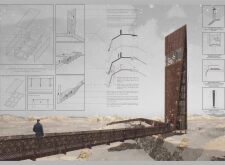5 key facts about this project
Materially, the Breaktower is constructed primarily from weathered steel, ensuring durability in the harsh Icelandic climate while allowing the structure to visually and conceptually resonate with the natural environment. The use of concrete foundations provides stability, supporting upper levels reinforced with steel and further enhancing the project’s resilience. Additionally, glass elements are used strategically to provide natural light and panoramic views of the stunning volcanic scenery, allowing visitors to connect directly with their surroundings.
Unique Interactions with the Landscape
What sets the Breaktower apart from conventional architectural projects is its emphasis on spatial connectivity and the visitor experience. Paths are carefully designed to encourage exploration and interaction with the landscape, enhancing social engagement among visitors. Different volumes of the structure create distinct spatial experiences, seamlessly transitioning from public to more intimate areas, allowing for both shared and personal moments in the setting. The integration of lookouts and thermal spas invites users to pause and engage meaningfully with the natural environment.
The architectural design responds intuitively to the surrounding geological features. The symmetrical organization of the structure, along with its dynamic silhouette, reflects the balance between the tectonic forces that shaped the landscape and the human desire to inhabit it. The synthesis of form and function is evident through the careful articulation of massing, which allows the structure to maintain a slender profile that adapts to the undulating land.
Sustainable Architectural Practices
Sustainability is a core principle driving the project’s design. The Breaktower utilizes geothermal energy for heating and incorporates rainwater collection systems, demonstrating a commitment to reducing ecological impact while enhancing user experience. The material choices not only align with aesthetic goals but also prioritize environmental accountability, showcasing how architecture can harmonize with the ecological context.
The Breaktower project represents a sophisticated intersection of architecture and nature, allowing visitors to engage with the dynamic Icelandic landscape while providing a functional, sustainable space. To fully appreciate the nuances of the architectural plans, sections, designs, and innovative ideas brought forth in this project, readers are encouraged to explore the detailed presentation further.


